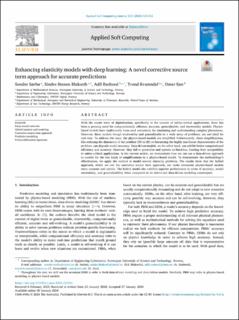| dc.description.abstract | With the recent wave of digitalization, specifically in the context of safety–critical applications, there has been a growing need for computationally efficient, accurate, generalizable, and trustworthy models. Physics-based models have traditionally been used extensively for simulating and understanding complex phenomena. However, these models though trustworthy and generalizable to a wide array of problems, are not ideal for real-time. To address this issue, the physics-based models are simplified. Unfortunately, these simplifications, like reducing the dimension of the problem (3D to 2D) or linearizing the highly non-linear characteristics of the problem, can degrade model accuracy. Data-driven models, on the other hand, can exhibit better computational efficiency and accuracy. However, they fail to generalize and operate as blackbox, limiting their acceptability in safety–critical applications. In the current article, we demonstrate how we can use a data-driven approach to correct for the two kinds of simplifications in a physics-based model. To demonstrate the methodology’s effectiveness, we apply the method to model several elasticity problems. The results show that the hybrid approach, which we call the corrective source term approach, can make erroneous physics-based models more accurate and certain. The hybrid model also exhibits superior performance in terms of accuracy, model uncertainty, and generalizability when compared to its end-to-end data-driven modeling counterpart. | en_US |

